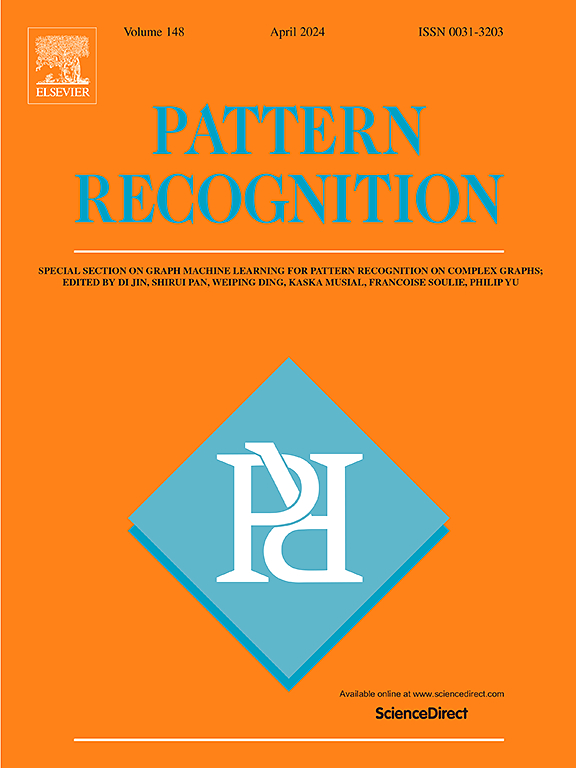用于子空间聚类的具有结构变化的扩散过程
IF 7.5
1区 计算机科学
Q1 COMPUTER SCIENCE, ARTIFICIAL INTELLIGENCE
引用次数: 0
摘要
基于光谱聚类的方法能有效捕捉底层数据结构,因此在子空间聚类领域大受欢迎。标准频谱聚类只关注数据点之间的成对关系,忽略了高阶相邻点之间的相互作用。整合扩散过程可以利用马尔可夫随机游走解决这一局限性。然而,如何确保扩散方法既能捕捉到足够的信息,又能保持对噪声的稳定性,仍然是一项挑战。在本文中,我们提出了具有结构变化的扩散过程(DPSC)方法,这是一种新颖的亲和学习框架,可增强扩散过程的鲁棒性。我们的方法拓宽了近邻的范围,并利用辍学思想生成随机过渡矩阵。此外,受结构变化模型的启发,我们使用两个过渡矩阵来优化迭代规则。由此产生的亲和矩阵经过自我监督学习,随后被整合回扩散过程中进行完善。值得注意的是,所提出的 DPSC 的收敛性已在理论上得到证明。在基准数据集上进行的大量实验证明,所提出的方法优于现有的子空间聚类方法。我们提出的 DPSC 的代码可在 https://github.com/zhudafa/DPSC 上获取。本文章由计算机程序翻译,如有差异,请以英文原文为准。

Diffusion process with structural changes for subspace clustering
Spectral clustering-based methods have gained significant popularity in subspace clustering due to their ability to capture the underlying data structure effectively. Standard spectral clustering focuses on only pairwise relationships between data points, neglecting interactions among high-order neighboring points. Integrating the diffusion process can address this limitation by leveraging a Markov random walk. However, ensuring that diffusion methods capture sufficient information while maintaining stability against noise remains challenging. In this paper, we propose the Diffusion Process with Structural Changes (DPSC) method, a novel affinity learning framework that enhances the robustness of the diffusion process. Our approach broadens the scope of nearest neighbors and leverages the dropout idea to generate random transition matrices. Furthermore, inspired by the structural changes model, we use two transition matrices to optimize the iteration rule. The resulting affinity matrix undergoes self-supervised learning and is subsequently integrated back into the diffusion process for refinement. Notably, the convergence of the proposed DPSC is theoretically proven. Extensive experiments on benchmark datasets demonstrate that the proposed method outperforms existing subspace clustering methods. The code of our proposed DPSC is available at https://github.com/zhudafa/DPSC.
求助全文
通过发布文献求助,成功后即可免费获取论文全文。
去求助
来源期刊

Pattern Recognition
工程技术-工程:电子与电气
CiteScore
14.40
自引率
16.20%
发文量
683
审稿时长
5.6 months
期刊介绍:
The field of Pattern Recognition is both mature and rapidly evolving, playing a crucial role in various related fields such as computer vision, image processing, text analysis, and neural networks. It closely intersects with machine learning and is being applied in emerging areas like biometrics, bioinformatics, multimedia data analysis, and data science. The journal Pattern Recognition, established half a century ago during the early days of computer science, has since grown significantly in scope and influence.
 求助内容:
求助内容: 应助结果提醒方式:
应助结果提醒方式:


